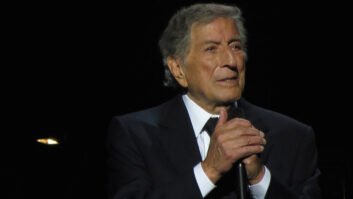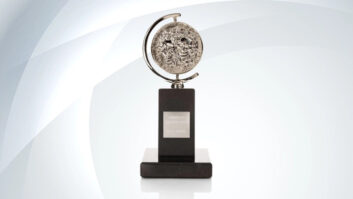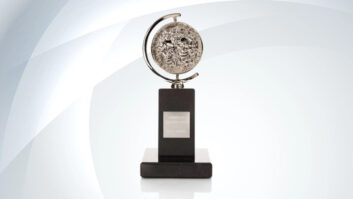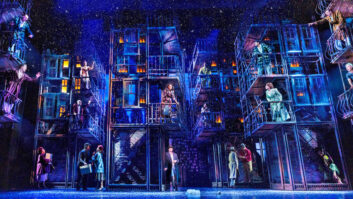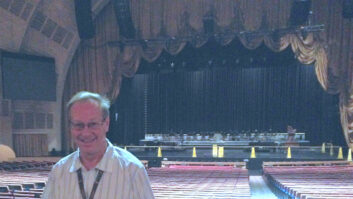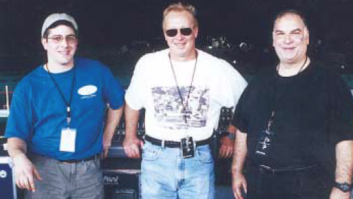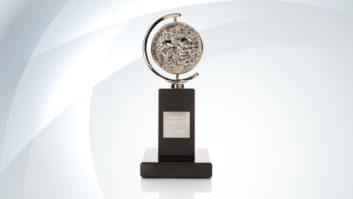Project studio owners use a variety of different tools, but they all need a system that can accommodate analog as well as digital signal, with plenty of processing power. Contained systems like Pro Tools have an undeniable attraction. Increasingly, though, producers like Tony Walstra are using less-expensive methods.
Walstra is a Connecticut native who produced pop singer Denise Levasseur’s recent, eponymous, solo release out of his home. His day gig at Caruso Music gives Walstra the opportunity to demo loads of new equipment. Currently, his studio features a Ramsa DA7 console. Lightpiped to this board is a Pentium II computer running Cakewalk, Cubase and Sound Forge.
As both a writer and executive producer on this album, Walstra farmed out some arranging and composing assignments. “With the technology available today, many aspects can be worked on the outside. I was constantly e-mailing MIDI and MP3 files for pre-production and Fed’exing ADAT tapes and CD-ROMs with. WAV files to writers.”
Many producers feel that tracking vocals requires the kind of perfectly tuned room that major studios are known for, but Tony Walstra demurs. “I will only record Denise’s vocals in my home at this point. The challenge of capturing the naturalness, mood and dynamic is the most rewarding part. Denise’s voice is very resonant, powerful and dynamic. We tried her in some of the larger commercial studios, and I discovered I always would get a better sound at home. Most of the engineers did not have the commitment to detail to record her vocal the way I do, and everything felt pressured and rushed.”
“Denise is such a dynamic singer that sometimes I will have to actually pad the mic when recording a loud chorus. She has this resonant frequency in her voice that on certain words will cause the mic to clip, but then when she is whispering a gentle verse, I don’t want the pad on the mic. So, on a song like that I will record the verses first and the choruses second. Then I match the levels in my computer.
“I use just a couple of dB of analog tube compression when I’m tracking; that way, I don’t have to commit, and it still leaves a lot of dynamic for later when mixing. I love using the digital compressors on the Ramsa DA7 when I’m doing the mix because at that point, I’m ‘massaging’ the track into place, and I may make a lot of changes in the Automix. I really like the two-phase approach to compression, with a tad of high-end tube compression on the way in and digital on the way out. With the technology available today, there is no need to adjust a compressor for the one or two exaggerated peaks on the whole track. Simply bring the problem waveforms down a few dB in your computer and then let the compressor work on a more level track. That way, you avoid the squashed sound while still getting a bit of the compressed sound, if that is what you like.
“I auditioned a lot of mics and preamps on Denise,” Walstra continues. “I love the RØDE Tube Classic mic through a Manley Mono Block preamp and then through a Demeter VTCL-2A Tube Optical Compressor. That combination has worked great for her voice. The audio path is completely tube; no transistors, no ICs until it hits the 24-bit converters on my Ramsa DA7 and becomes digital and stays that way. At this point, I like a lot of tube gear on the front end of any type of digital recording.
“The drummer I use has Roland Pro V-drums, which I only used for the MIDI triggers. I had him play them using some of my modules, so when he left the session, I was able to manipulate the tracks and still have them sound human and real. I always like to have him present when I’m editing drums, because he had valuable input coming from a drummer’s perspective. We would overdub real cymbals and use some hand percussion. I always use real bass guitar, except occasionally on a dance song. We DI that right into my Manley preamp.”
Although working with digital audio sequencers and the Ramsa DA7 yielded satisfactory results on the Denise Levasseur project, Walstra is considering amending his tracking and mixing methods. “For my next project, I’m looking at [Ensoniq] PARIS Pro or a dedicated HDR. I’m not sure if I’m ready to go completely desktop because I still feel the need for a console. I’m also looking at the Sony DMX-R100 board.”
Gary Eskow is a Mix contributing editor.

